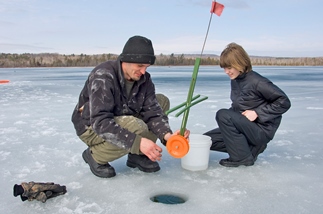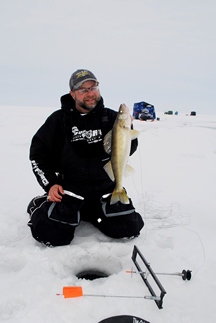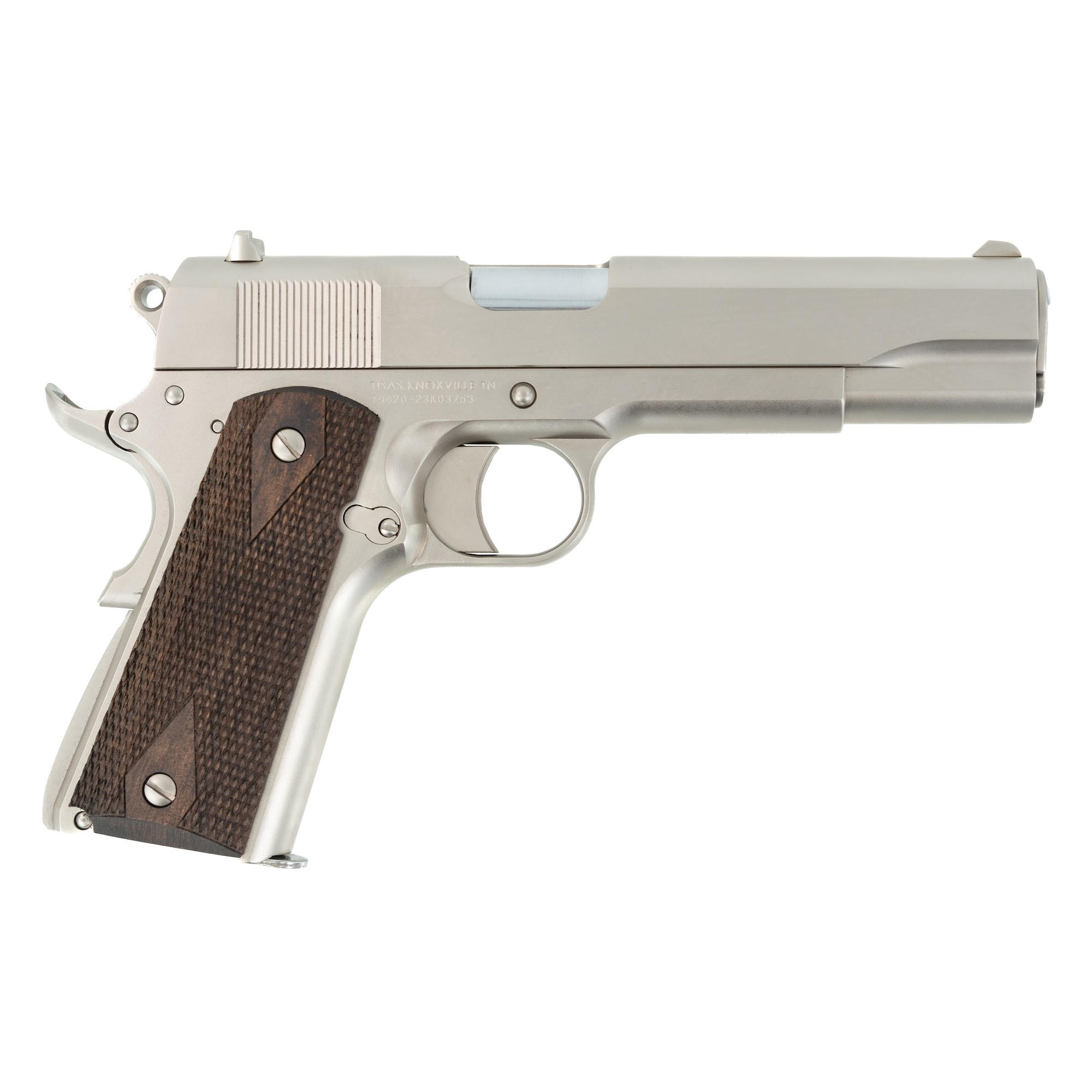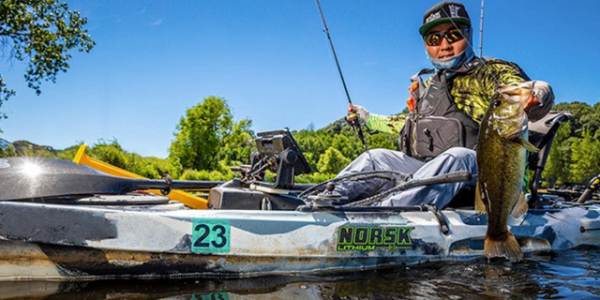Tip-ups offer anglers more options on the ice
GW: A great way to ice fish on stakeout and stay warm in the distance…
Tom Goniea credits tip-ups with converting him into an ice fisherman.
A Michigan Department of Natural Resources fisheries biologist, Goniea said he’d never been ice fishing when a buddy invited him to set tip-ups. He took an immediate liking to it.
“I felt like an 8-year-old on the ice,” Goniea said. “I was happy to just get flags and I was perfectly content to catch undersized pike. Tip-ups are relatively easy to set up, relatively easy to use, and pike are relatively easy to catch.
“But I went on to research where there were lakes with populations that had larger pike in them and started chasing them.”
Goniea eventually became a full-fledged ice fisherman – walleyes, pan fish, even smelt – but says it was his early success with tip-ups that opened his eyes to the joy of ice fishing.
 Tip-ups are devices designed to fish set lines through the ice. Tip-ups are equipped with spring-loaded flags that “tip up” when the bait is taken by a fish.
Tip-ups are devices designed to fish set lines through the ice. Tip-ups are equipped with spring-loaded flags that “tip up” when the bait is taken by a fish.
Traditionally, tip-ups were constructed of wood with three basic components – a pair of cross-members, which forms an X – and a third piece attached perpendicular to the cross-members. The cross-members straddle the hole in the ice, keeping the tip-up from falling into the water.
A simple spool is attached to the vertical member that is submerged (which keeps it from freezing) and a spring-loaded flag is attached to the portion of the vertical member above the ice. When a fish takes the bait and swims off, the revolving spool triggers the flag to release, alerting the angler to the strike. The angler checks the line, sets the hook, and hauls the line in by hand until he pulls the fish through the hole.
Once primarily the output of home workshops, tip-ups are now made by dozens of manufacturers from a variety of materials – wood, plastic or metal – and the basic design has changed, too. Tip-ups now range from a single base member that straddles the hole to round models that cover the hole and are designed to help slow ice formation. Tip-ups range in price from just a few dollars to many, many times that. One high-tech model even boasts a feature that’ll signal your cell phone when the spool starts spinning.
Traditionally, tip-ups were spooled with Dacron line, though the newer braided lines are becoming more popular. The thicker, heavier Dacron or braid is more visible and easier to handle than monofilament or fluorocarbon line. Anglers typically attach a length of less-visible mono or fluorocarbon to the main line, generally with a swivel, to serve as a leader. The hook is tied to the leader.
“I generally use a couple of feet of leader, though with pike I’m not sure that’s necessary,” Goniea said. “I’m more likely to use a wire leader.”
Tip-ups are more closely associated with pike fishing than any other species here in Michigan, but they can be used to pursue most any species. In recent years, more walleye fishermen have been experimenting with tip-ups, especially since the regulations change that allows anglers to use three lines (previously it was two). While some walleye anglers continue to prefer to jig with two rods, they can now do so but still set out a tip-up.
 “If you want to jig two rods, that’s fine, but you can’t jig three rods,” said Michigan walleye pro Mark Martin. “So you might as well have a tip-up out there.”
“If you want to jig two rods, that’s fine, but you can’t jig three rods,” said Michigan walleye pro Mark Martin. “So you might as well have a tip-up out there.”
Martin said he’s sold on using tip-ups for walleye fishing.
“I love them,” he said. “Sometimes tip-ups out-produce jigging rods. I think it’s because it’s basically a subtler or more consistent motion of the minnow, because it’s sitting still and the fish maybe are queued into a bait that’s just barely moving.
“It’s really the same as dead rod – it’s just another dead rod set at a specific depth.”
Tip-ups are often used by trout fishermen – for lake trout and rainbows — and sometimes by perch or crappie anglers.
Tip-ups are designed to hold the bait at a predetermined depth; anglers use just enough weight (usually spilt shot) to keep the bait down. Generally, pike anglers dangle their bait just above the tops of weed beds. Perch anglers will fish just off bottom, as walleye anglers have always done, though fishing higher in the water column is growing in popularity. Lake trout anglers usually fish near bottom, though rainbow trout anglers often fish high in the water column – sometimes just below the ice. Same goes for crappie fishermen.
Fishermen may use up to three tip-ups at one time. The devices must be marked with the name and address of the owner and must be under the immediate control of the angler; you can’t set them, leave, and come back to check them later.
If you did, you’d be missing most of the fun, Goniea says.
“The biggest thrill of tip-up fishing is when you get a flag, you never know what’s on the end of your line,” he said. “You don’t know if it’s going to be 10 inches or 40 inches. If you pick your lakes strategically – choose lakes that are known to have populations of large fish – you never know what you’re going to get.”
Learn more about fishing tips, opportunities and resources on the DNR website www.michigan.gov/fishing.





